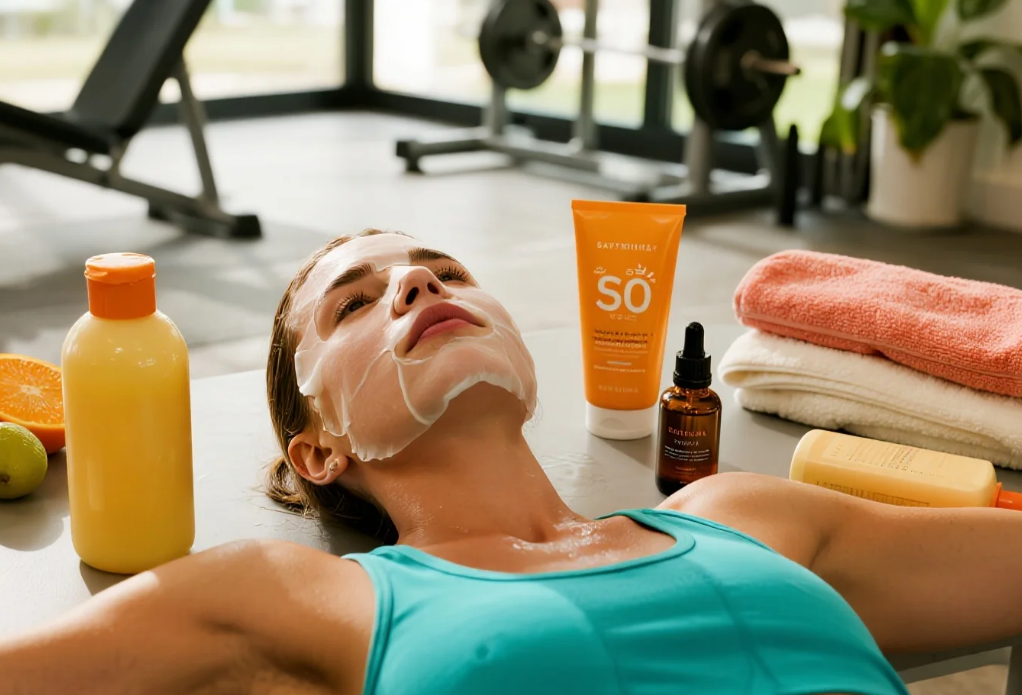Aerobic vs. Anaerobic: Which Exercise is Better for Your Skin?
The health benefits of exercise are undeniable, but did you know that different types of exercise can have vastly different effects on your skin? Aerobic and anaerobic exercise—these two major types of exercise—not only work through different mechanisms but also offer distinct benefits and challenges for the skin. Understanding their differences and characteristics will help you choose the exercise method that best suits your physique and skin needs, allowing you to not only shape your figure but also achieve a healthy, radiant complexion.
Aerobic exercise primarily refers to long-duration, moderate-intensity exercise, such as jogging, swimming, cycling, and brisk walking. This type of exercise relies on oxygen inhaled to break down sugar and fat, providing sustained energy to the muscles. During exercise, the heart rate is maintained between 60% and 80% of the maximum heart rate for at least 20 minutes, strengthening the heart and lungs. Because aerobic exercise improves blood circulation, it helps eliminate waste and toxins from the body, increasing the supply of nutrients and oxygen to the skin. This not only improves skin tone and smoothness, but also effectively reduces inflammation, alleviating dullness and acne. In contrast, anaerobic exercise involves short, high-intensity bursts of exercise, such as weightlifting, sprinting, push-ups, and squats. Anaerobic exercise doesn't rely on a continuous supply of oxygen, instead drawing on the energy systems stored within the muscles. Heart rates typically approach or exceed 80% of maximum heart rate, and duration is short, typically less than two minutes. The greatest benefit of anaerobic exercise lies in strengthening muscles and sculpting the body. Increased muscle mass not only enhances the body's shape but also increases the basal metabolic rate, helping the body burn more calories at rest. For the skin, stronger muscle support makes it firmer and more elastic, reducing sagging and fine lines.
 While both aerobic and anaerobic exercise can improve skin condition, their skincare challenges shouldn't be ignored. Aerobic exercise produces a lot of sweat. If not cleansed and hydrated promptly, the combination of sweat and sebum can easily clog pores and lead to acne breakouts. Furthermore, excessive and prolonged aerobic exercise can increase oxidative stress on the muscles and skin, potentially contributing to skin aging. Therefore, it's crucial to manage exercise intensity and frequency appropriately and maintain a good post-exercise skincare routine.
While both aerobic and anaerobic exercise can improve skin condition, their skincare challenges shouldn't be ignored. Aerobic exercise produces a lot of sweat. If not cleansed and hydrated promptly, the combination of sweat and sebum can easily clog pores and lead to acne breakouts. Furthermore, excessive and prolonged aerobic exercise can increase oxidative stress on the muscles and skin, potentially contributing to skin aging. Therefore, it's crucial to manage exercise intensity and frequency appropriately and maintain a good post-exercise skincare routine.
Anaerobic exercise, due to its high intensity, carries the risk of muscle or joint injury. Without professional guidance and improper form, it can also cause localized inflammation or bruising. Furthermore, anaerobic exercise offers limited benefits for cardiopulmonary function. Without aerobic training, it can affect the skin's overall metabolism and blood circulation, diminishing its radiance. Therefore, anaerobic training alone should not dominate a long-term exercise plan; a balanced approach with aerobic exercise is more beneficial for overall health.
From an exercise frequency perspective, the optimal schedule for most people is 3-5 times per week of moderate-to-low-intensity aerobic exercise, supplemented by 2-3 times of anaerobic strength training. This combination maintains optimal cardiopulmonary function while promoting skin firmness through strength training, preventing sagging caused by muscle loss. For those with sensitive skin or beginners, three times a week of aerobic exercise can prevent excessive sweating that can damage the skin barrier. Those with better physical fitness can increase their exercise frequency, but they should also ensure adequate moisturizing and antioxidant care.
Beyond exercise itself, diet and lifestyle are also crucial to skin health. Vitamins C and E are powerful antioxidants that help fight free radical damage caused by exercise, promote collagen production, and enhance skin elasticity and radiance. Deep-sea fish, rich in omega-3s, help reduce skin inflammation and maintain a balanced oil-oil balance. Avoiding high-sugar and high-fat foods can reduce blood sugar and insulin fluctuations, effectively reducing oil production and the risk of clogged pores. Promptly cleaning sweat after exercise and using gentle skincare products to hydrate and repair are essential steps to maintaining healthy skin.
Different skin types require different exercise choices and skincare strategies. Those with acne-prone skin are advised to choose gentler exercises like swimming or indoor yoga to avoid prolonged irritation from sweat and UV rays. Those with sensitive skin should prioritize post-exercise soothing and repair, choosing skincare products containing barrier-repairing ingredients like ceramides. Those with dull skin can improve skin firmness and radiance by combining aerobic exercise with strength training.
Finally, it's important to emphasize that any skin improvement from exercise isn't achieved overnight. Visible changes require four to eight weeks of consistent exercise regimen and a meticulous skincare routine. Keeping a log of your exercise and skin condition, and adjusting your exercise in tensity and frequency accordingly, is an effective way to protect your skin and maintain youthful appearance.
tensity and frequency accordingly, is an effective way to protect your skin and maintain youthful appearance.
Exercise, whether aerobic or anaerobic, is an essential component of a healthy lifestyle. Combining both improves cardiopulmonary function and strengthens muscle strength, bringing lasting youthful vitality to your skin. The key is to find a rhythm and method that works for you and persevere. This way, your skin will not only appear radiant due to improved blood circulation, but also become firmer and more elastic due to muscle support, radiating a naturally healthy and beautiful glow.









